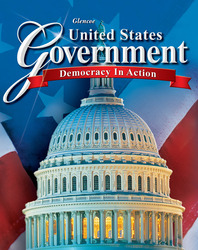United States Government: Democracy in ActionChapter 18:
Interest Groups and Public OpinionStudent Web Activity Lesson PlansIntroduction
In this activity, students will learn why government officials are interested in public opinion, and how pollsters learn what public opinions are. Lesson Description
Students will explore the Web site of This Nation, a nonpartisan group. They will read information about public opinion polls, and answer four questions. Students will then create their own poll to survey other students about how their public opinions have been shaped. Instructional Objectives
- Learners will define public opinion and identify elements that pollsters try to determine.
- Learners will create their own polls to determine what shaped the public opinions of respondents.
|
Student Web Activity Answers
- According to the document, public opinion is the distribution of opinions and attitudes held by the public.
- George Washington's "pollster" was a friend in Virginia who mingled with the "ordinary folks" to find out what they thought of the president.
- Pollsters try to determine the stability of people's opinions over time, how strongly the public holds particular opinions, and the direction those opinions seem to be moving.
- Randomness is important because it removes any bias that might creep in by allowing the pollster to select people, unintentionally or not, on the basis of their race, sex, height, availability or any number of other criteria that would make the sample unlike the general population from which it is drawn.
- After students have developed their surveys, ask groups to judge whether the questions are biased. After the surveys have been conducted, post the responses on the board and discuss which element most shaped the public opinion of respondents. Also discuss non-sampling errors that may have affected poll results.
|
 | 




